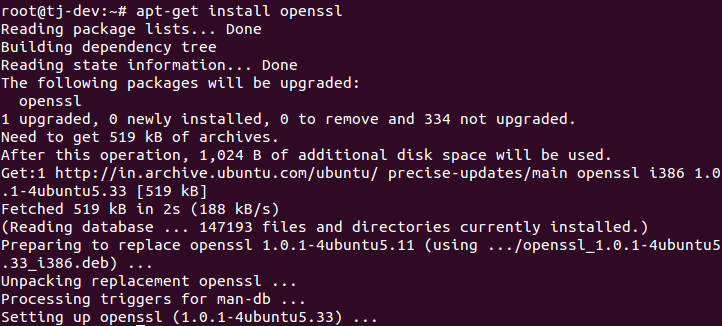SSL (Secure Sockets Layer) is a protocol used for transmitting sensitive information over the internet. This could include information such as account passwords and credit card details. SSL is most commonly used in conjunction with web browsing over the HTTP protocol. The OpenSSL library provides an implementation of the SSL and TLS (Transport Layer Security) protocols.
To demonstrate the use of OpenSSL, we need two systems. One will be used as a server on which we shall install the OpenSSL package, and also Apache. The second system will be used as a client. To install Apache, we run the following command:

We will now see how to create a self-signed certificate using OpenSSL for Apache. This will help encrypt traffic to the server:

- Once OpenSSL is installed, we need to enable SSL support, which comes as standard in the Apache package for Ubuntu. To do this...



